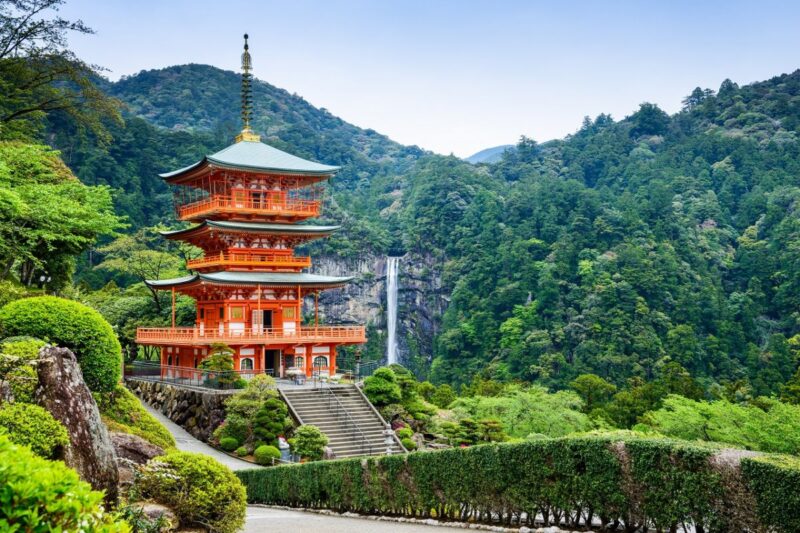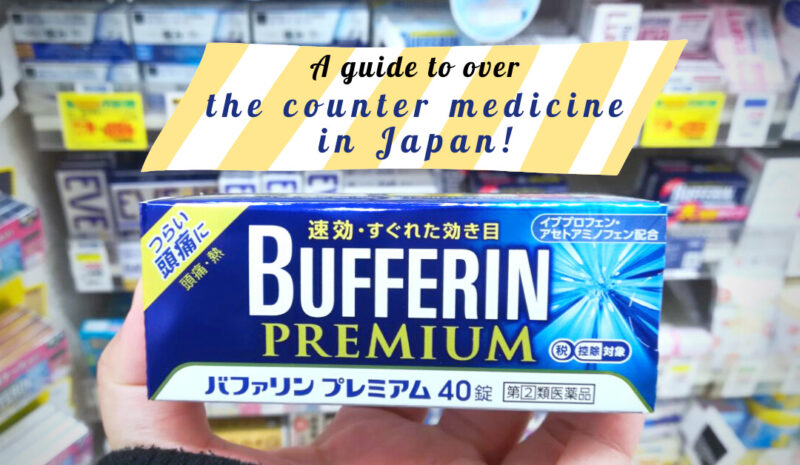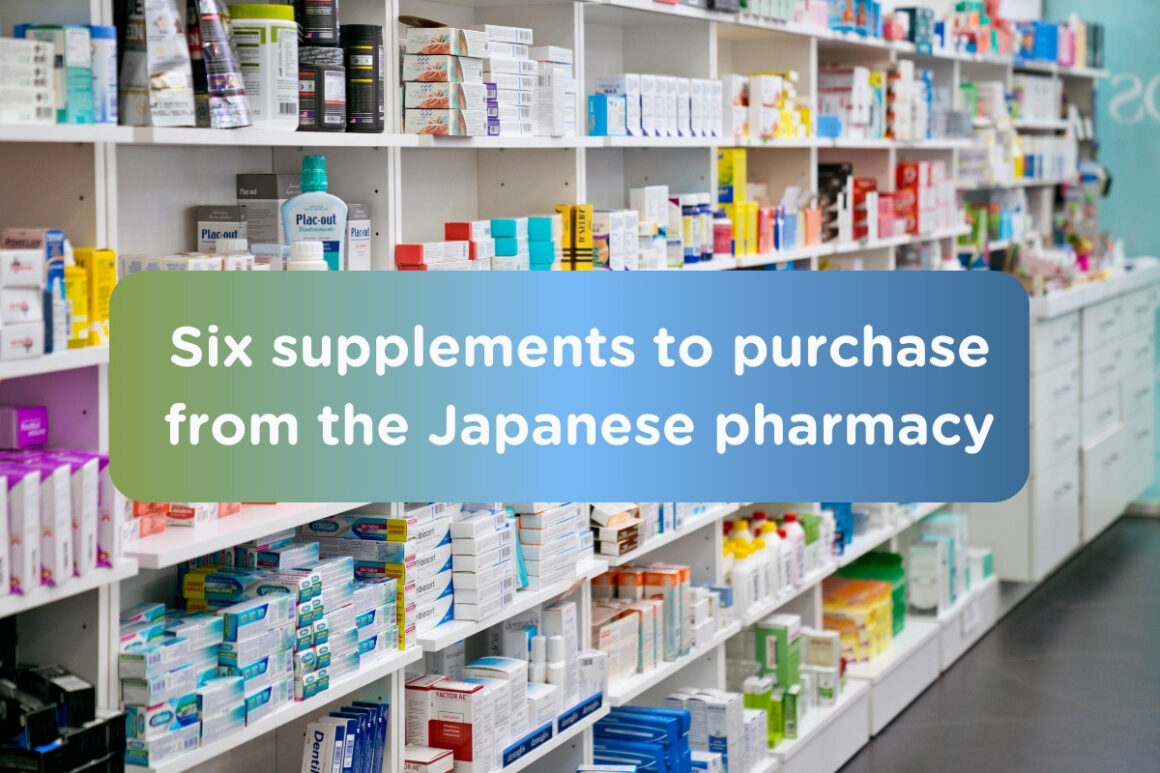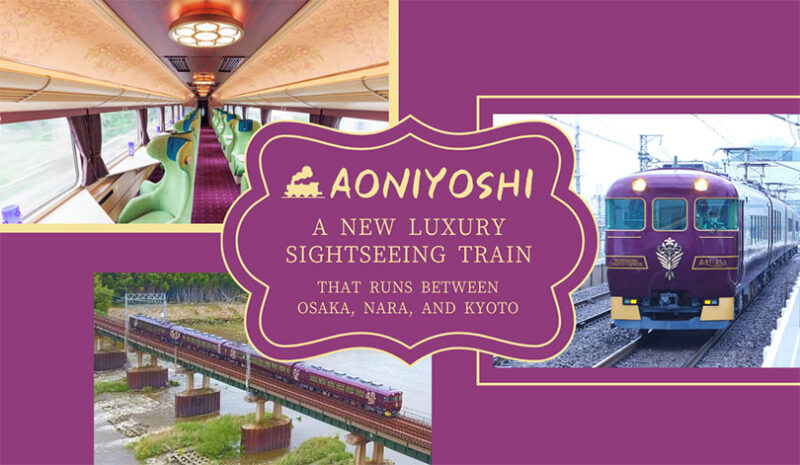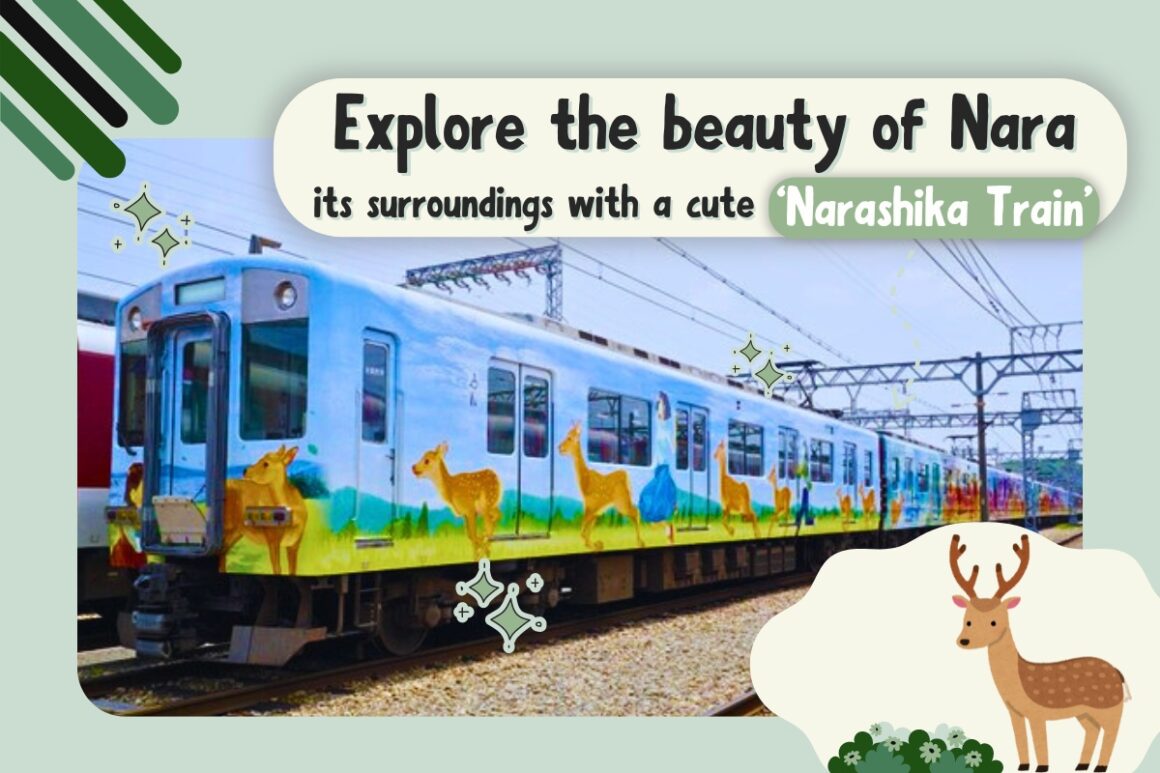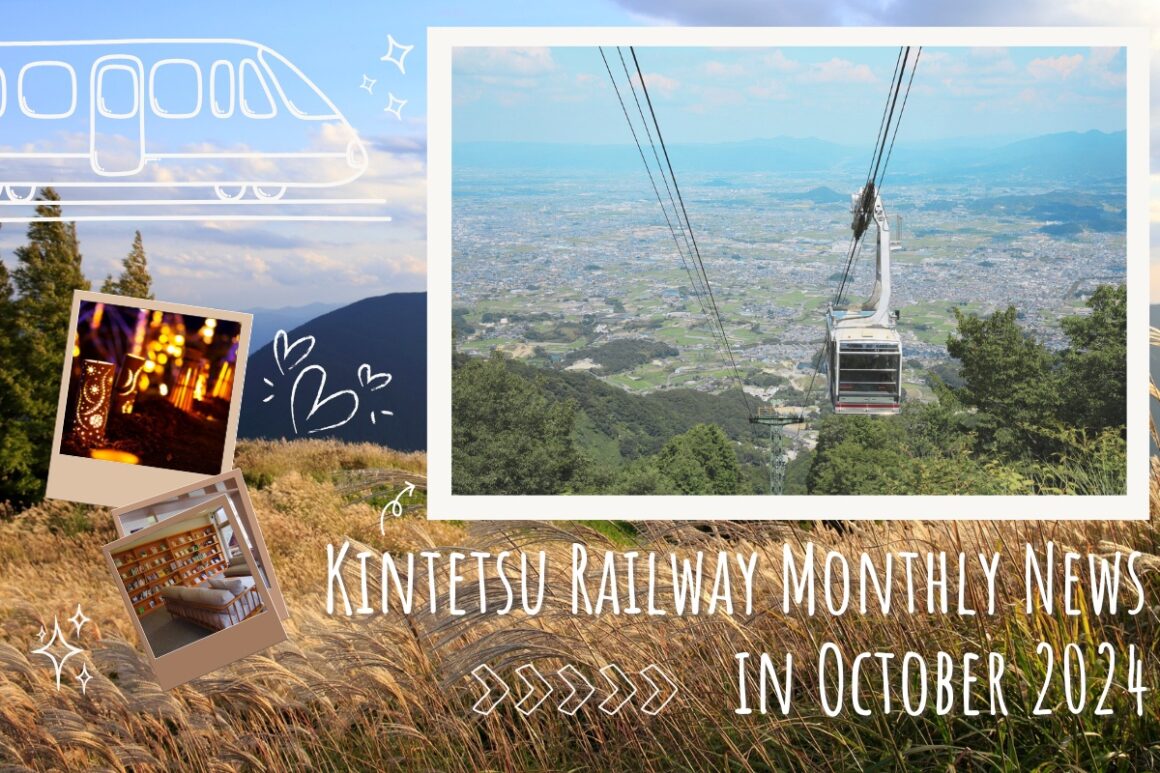10 amazing things to do in Wakayama, Japan!
Sep 15, 2020
Wakayama is a mountainous prefecture located at the south of Honshu Island, and it is bordered by Osaka, Nara, and Mie Prefectures. Often overlooked for its more famous neighbors, Wakayama is known for its gorgeous green forest and the origin of Shinto-Buddhist syncretism in Japan.
The prefecture is the untouched part of the Kansai Region, and it is no exaggeration to say that Wakayama still feels sacred and hidden even until today. Wakayama is the hidden gem of West Japan; it’s a prefecture packed with numerous beautiful spots and is only an hour away from Osaka.
Some of those beautiful spots include Nachi Falls and the pagoda of Seigantoji Temple, Wakayama Castle and its Momijidani Teien Garden, and the great Konpon Daito Pagoda at Danjo Garan Temple in Mt. Koya.
Now that you know Wakayama is brimming with culture and history, how about visiting the prefecture for a relaxing weekend getaway?
Index
How to get there
Recommended sightseeing spots in Wakayama
Wakayama’s best local treats
How to get there
Just like other prefectures, Wakayama is accessible by rails, air, and land. The prefecture is connected to Tokyo, Osaka, Kyoto, and other major cities through the JR lines and airplanes.
If you’re using the JR Pass, you may want to opt for the shinkansen and the JR express trains to reach Wakayama. It only takes an hour to reach Wakayama from both Osaka and Kyoto and approximately 3.5 hours from Tokyo as you have to transfer train at Shin-Osaka Station.
Recommended sightseeing spots in Wakayama
Wakayama is a spot to visit if you’re looking for something off the beaten path. The prefecture remains untouched and is packed with numerous scenic spots and also dozens of gorgeous, yet mystical shrines and temples.
The prefecture is a must-visit for those visiting the Kansai Region; it is a zen destination where you can escape from the hustle and bustle of the big cities.
Here are our picks for the best things to do in Wakayama, Japan!
Subindex
- Wakayama Castle
- Momijidani Teien Garden
- Kuroshio Market
- Porto Europe
- Okunoin Temple
- Konpon Daito
- Nachi Falls and the Seigantoji Pagoda
- Oyunohara
- Shirahama beach
- Hashigu-iwa Rocks
1. Visit the majestic Wakayama Castle
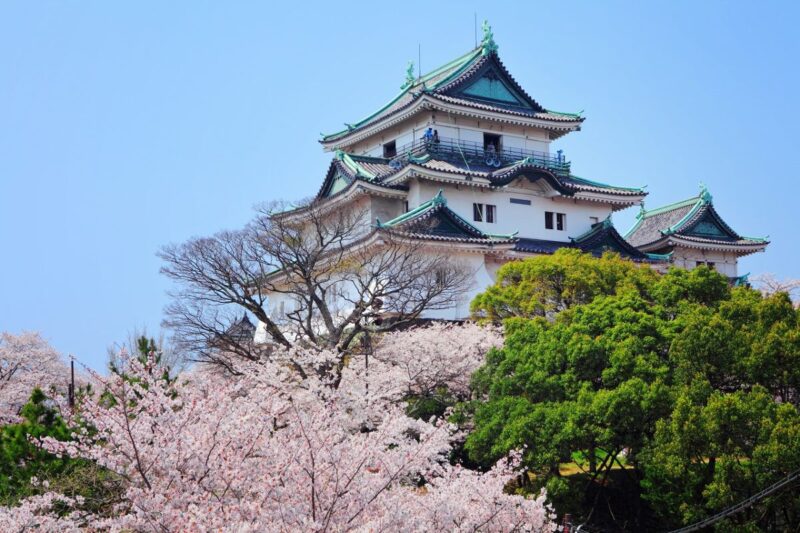 Wakayama Castle is a traditional Japanese castle with a history dating back from the 16th Century. The castle is located in the middle of Wakayama City and has been destroyed and rebuilt several times. The last construction was done in 1958 after World War II, and ever since then, the castle became a symbolic icon of Wakayama Prefecture.
Wakayama Castle is a traditional Japanese castle with a history dating back from the 16th Century. The castle is located in the middle of Wakayama City and has been destroyed and rebuilt several times. The last construction was done in 1958 after World War II, and ever since then, the castle became a symbolic icon of Wakayama Prefecture.
Wakayama Castle is nestled in a spacious and beautiful area together with a zoo, several beautiful gardens, and a very special bridge. It takes around an hour to explore the whole area.
Wakayama Castle
- Business hours: 9:00-17:30 (last entry is at 17:00)
- Closed from December 29 to 31
- Admission: adults (age 15 and above) 410 yen; children (age 14 and under) 200 yen
- Access: a short walk from Koenmae bus stop; a 10-minute walk from Nankai Wakayama-shi Station
- Google MAP
- English pamphlet (PDF)
2. Stroll around the Momijidani Teien Garden
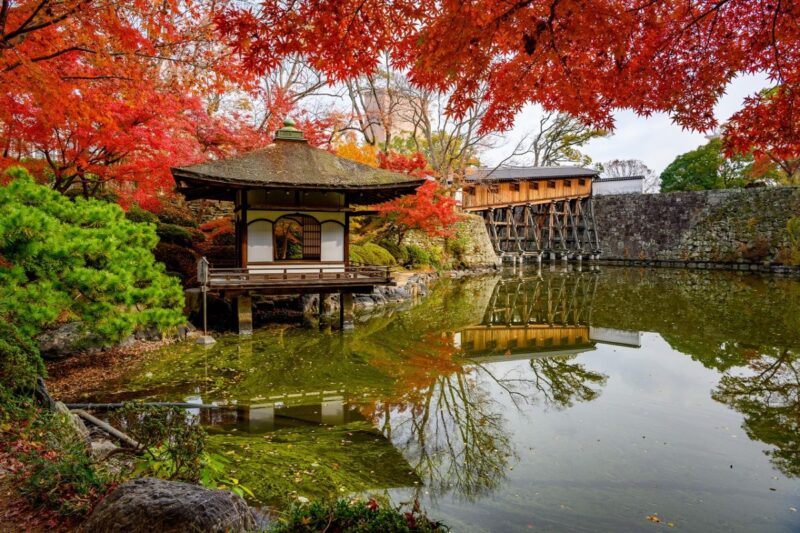 How about having a short walk around the Momijidani Teien Garden?
How about having a short walk around the Momijidani Teien Garden?
Located within the Wakayama Castle grounds, Momijidani Teien Garden is a traditional Japanese garden that is known for its wonderful fall scenery.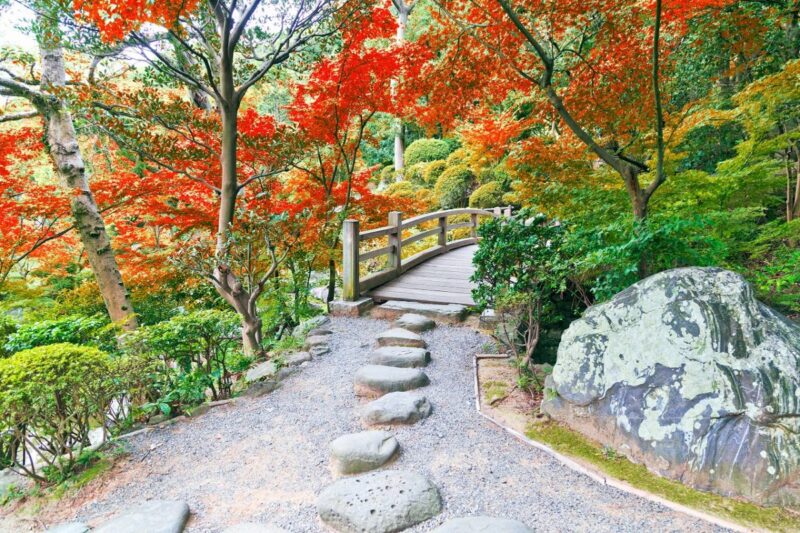
The garden features a large pond, stone paths, several bridges, and a Japanese tea house where you can try authentic Japanese sweets and matcha. Sometimes the tea house also offers a tea ceremony experience, so you may want to contact the tea house directly, or ask the local tour agent to arrange a booking in advance before you visit Wakayama.
Momijidani Teien Garden
- Business hours: 9:00-17:00
- Closed from December 29 to 31
- Admission: free
- Access: a short walk from Koenmae bus stop; a 10-minute walk from Nankai Wakayama-shi Station
- Google MAP
- Pamphlet (PDF)
3. Watch the tuna-cutting show at Kuroshio Market
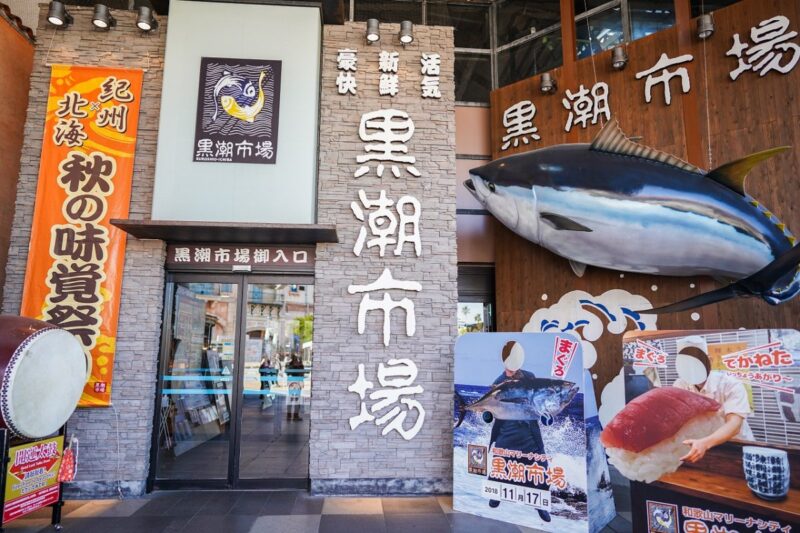
Rei Imagine / Shutterstock.com
Craving for some fresh sashimi or sushi? How about visiting Kuroshio Market to try its fresh seafood?
Kuroshio Market is the local seafood market of Wakayama, and it is a perfect place to visit if you’re looking for some authentic, fresh sushi and sashimi, or other Japanese treats, whether it is sweet or savory.
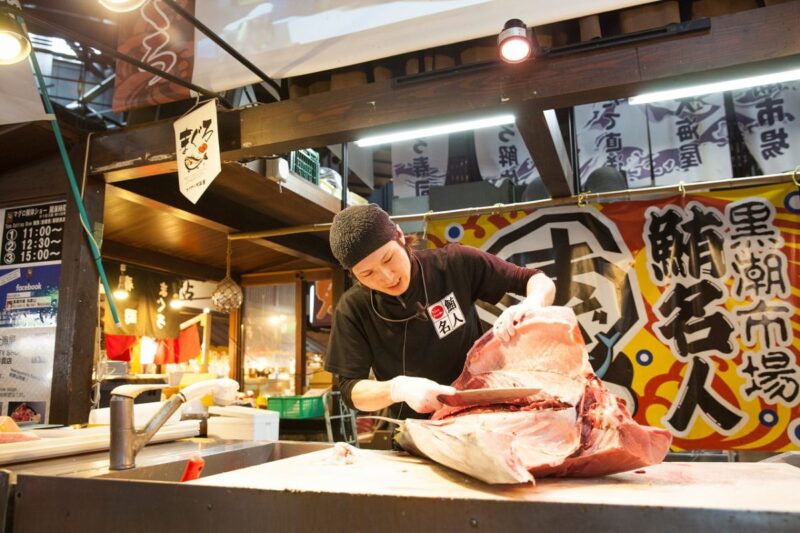
bankerwin / Shutterstock.com
The tuna-cutting show, which takes place 3 times a day at 11:00, 12:30, 15:00, is an entertaining show that is fun and worth watching.
Kuroshio Market
- Business hours: 10:00-17:00
- See their scheduled holidays Here
- Access: a short walk from the Marina City bus stop
- Google MAP
- Website
4. Take yourself to Europe at Porto Europe
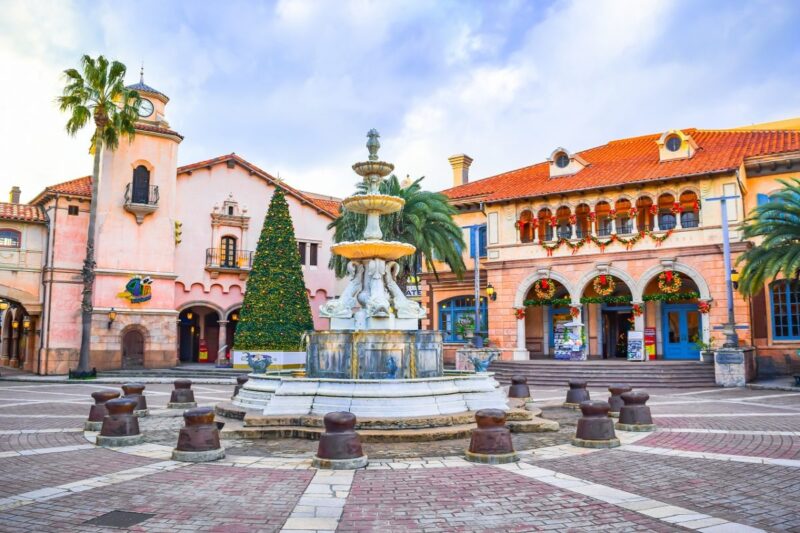
Sitthipong Pengjan / Shutterstock.com
Porto Europe is a European-style amusement park in Wakamaya, located inside the Marina City. The park features numerous attractions, including roller coasters, a Ferris wheel, a water slide, a carousel, and other arcade-type attractions. The area resembles the streets in Italy, France, and Portugal, so you won’t feel like you’re in Japan when visiting the park.
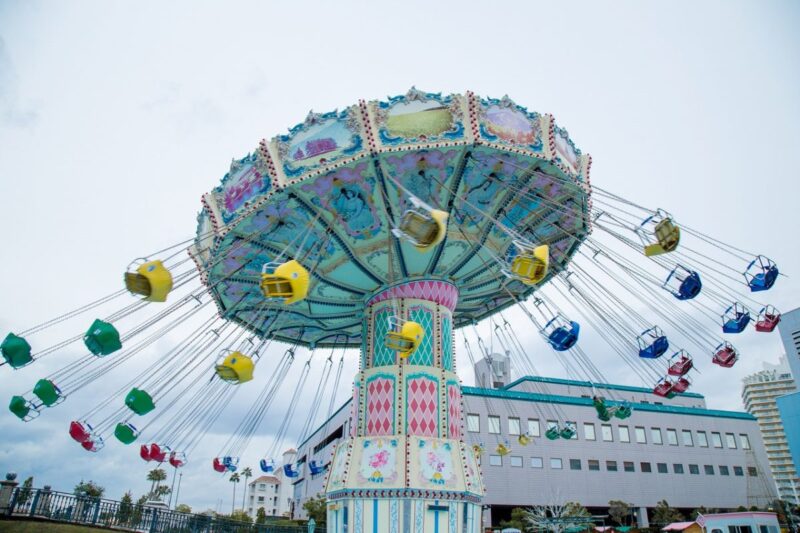
C.Lotongkum / Shutterstock.com
In addition to its wonderful attractions and park designs, Porto Europe is packed with some European-style restaurants and cafes, Insta-worthy photo spots, and cute little streets.
Porto Europe
- Business hours: 10:00-17:00
- Admissions: adults 3,800 yen, children 3,200 yen
- Access: a short walk from the Marina City bus stop
- Google MAP
- Website
5. Visit the temple where Kobo Daishi is enshrined: Okunoin Temple
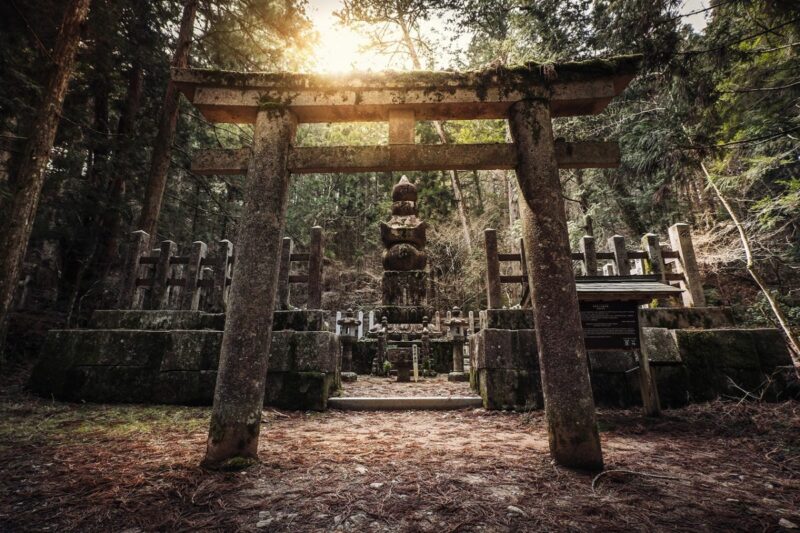 Located in Mt. Koya, Japan’s most sacred mountains, Okunoin Temple is the site where Kobo Daishi is enshrined. Known as one of the most sacred spots in Japan, Okunoin Temple is a popular pilgrimage spot of Wakayama. Inside the area, there is Okunoin Cemetery, the largest in Japan, with over 200,000 tombstones lining the road to Kobo Daishi’s mausoleum.
Located in Mt. Koya, Japan’s most sacred mountains, Okunoin Temple is the site where Kobo Daishi is enshrined. Known as one of the most sacred spots in Japan, Okunoin Temple is a popular pilgrimage spot of Wakayama. Inside the area, there is Okunoin Cemetery, the largest in Japan, with over 200,000 tombstones lining the road to Kobo Daishi’s mausoleum.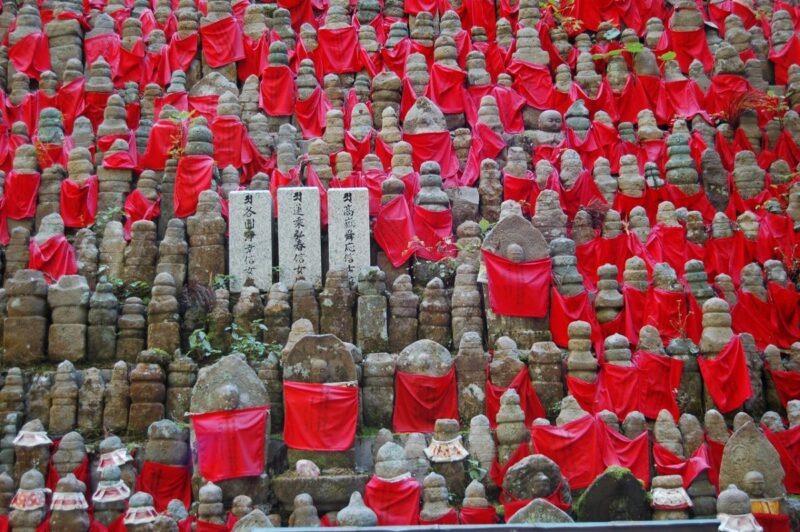 There are hundreds of Buddha statues displayed along with the Okunoin Cemetery, 700 years old trees, and tombs of the royal family, of the imperial court, daimyo, and military commanders along the road approaching the shrine. It is said that ‘Okunoin is not a place of the world of humans’.
There are hundreds of Buddha statues displayed along with the Okunoin Cemetery, 700 years old trees, and tombs of the royal family, of the imperial court, daimyo, and military commanders along the road approaching the shrine. It is said that ‘Okunoin is not a place of the world of humans’.
Okunoin Temple
- Open for 24 hours
- Open throughout the year
- Google MAP
- Website
6. Admire the Konpon Daito pagoda
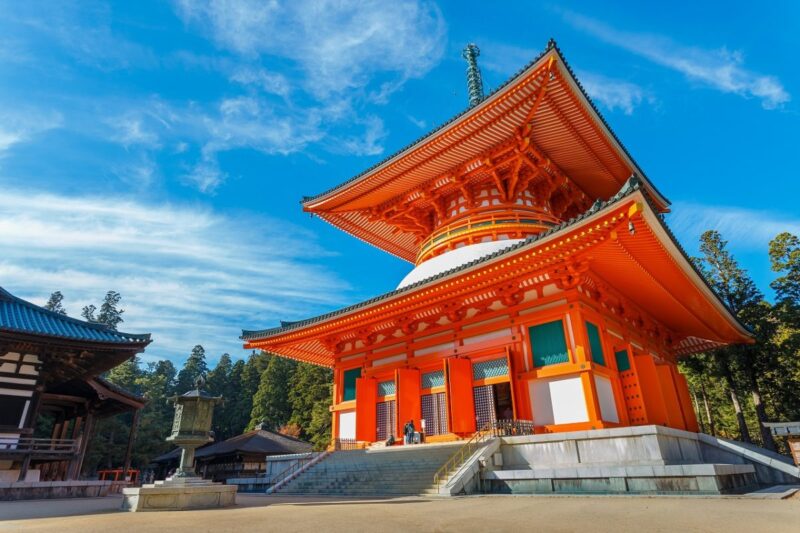 How about visiting Garan to admire its beautiful 50-m tall Konpon Daito pagoda?
How about visiting Garan to admire its beautiful 50-m tall Konpon Daito pagoda?
This gigantic bright-vermilion pagoda was established by Kobo Daishi as a place for secret training in Shingon Buddhism. The pagoda features a Dainichi-nyorai (Cosmic Buddha), four attendant Buddhas, and 16 bodhisattvas painted on its pillars. It is believed that Kobo Daishi painted the pillars himself, but the current building and paintings were reconstructed in 1934.
Konpon Daito
- Business hours: 8:30-17:00
- Google MAP
- Website
7. The picturesque Seigantoji Pagoda and the gorgeous Nachi Falls
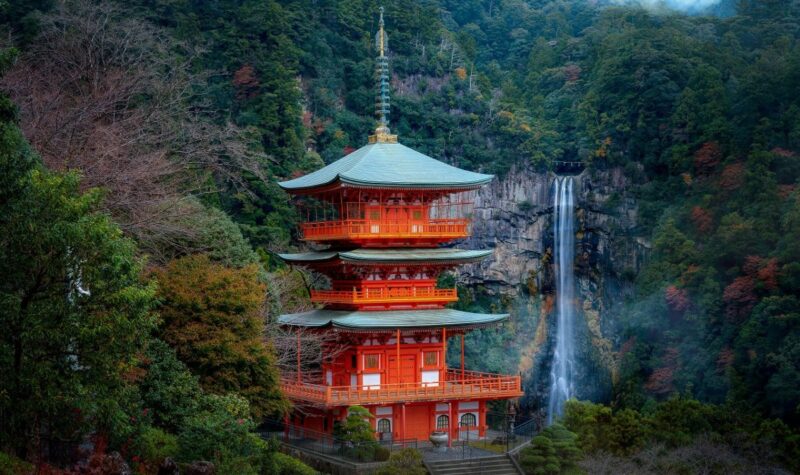 Stands right in front of the breathtaking Nachi Falls, the three-story pagoda of Seigantoji Temple is a brilliant example of a man-made architecture in synergy with natural elements.
Stands right in front of the breathtaking Nachi Falls, the three-story pagoda of Seigantoji Temple is a brilliant example of a man-made architecture in synergy with natural elements.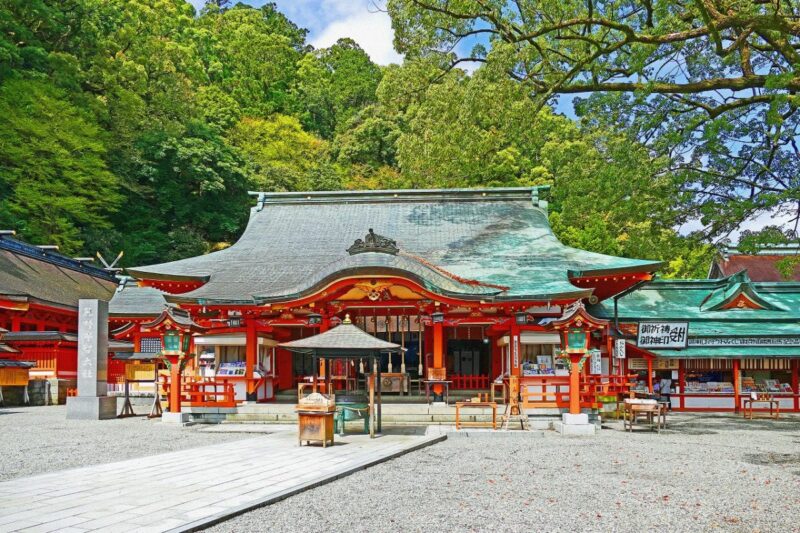
The pagoda is also attached to Kumano Nachi Taisha Shrine, a Shinto shrine in the Kumano area, making it one of the few joined Buddhist Temples – Shinto Shrines in Japan. The pagoda is the oldest structure in the Kumano area and is home to many important cultural properties.
Seigantoji
- Business hours: 5:00-16:00
- Admissions: free to enter the site, a separated admission needed when entering the pagoda
- Google MAP
- Website
8. Stare at the largest torii in Japan: Oyunohara
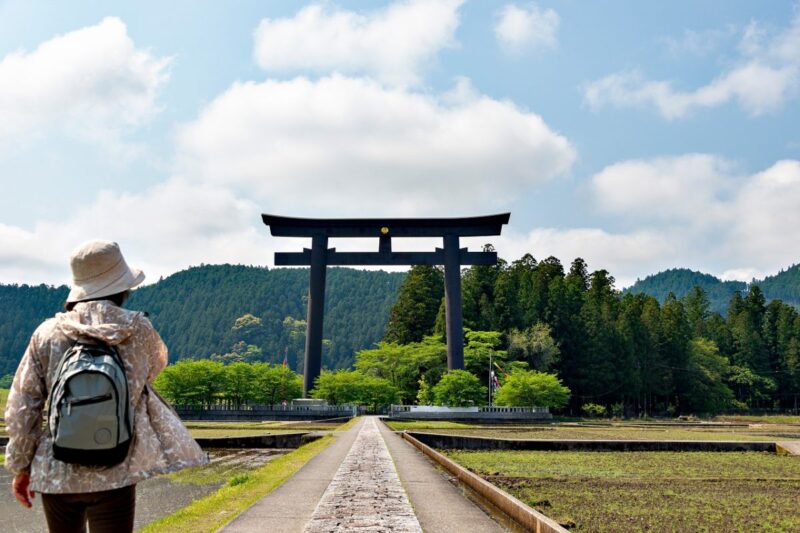 Oyunohara was the gate of the Kumano Hongu Taisha, the 12 shrine pavilions of the grand shine in Oyunohara, but those shrines were swept away by a severe flood in 1889. Only two small stone shrines remain, but the area is still popular among both foreign and local tourists for its towering torii gate, which is the largest in Japan. Oyunohara torii represents the separation of human and spiritual worlds.
Oyunohara was the gate of the Kumano Hongu Taisha, the 12 shrine pavilions of the grand shine in Oyunohara, but those shrines were swept away by a severe flood in 1889. Only two small stone shrines remain, but the area is still popular among both foreign and local tourists for its towering torii gate, which is the largest in Japan. Oyunohara torii represents the separation of human and spiritual worlds.
Oyunohara
- Access: please refer Here
- Google MAP
9. Have fun at the white sand beach: Shirahama Beach!
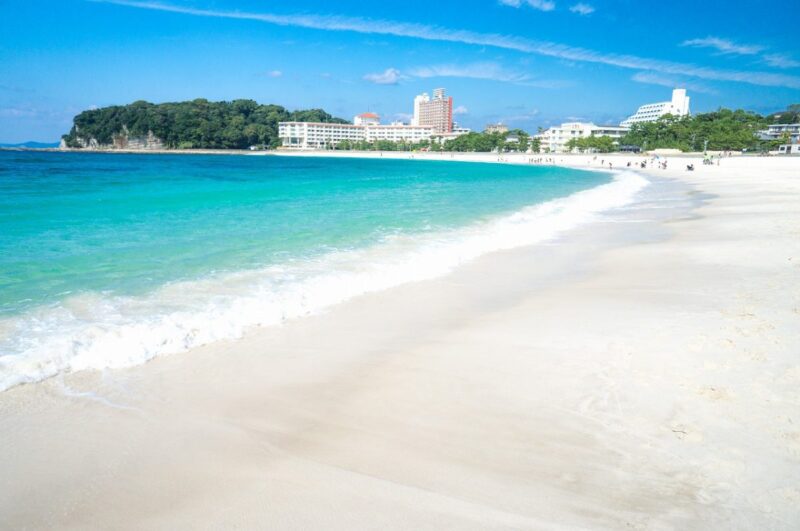
Known as the most popular beach in the Kansai region, Shirahama Beach attracts a huge crowd in the summer every year. The white sand and the crystal clear water made this beach become one of the most beautiful beaches in Japan. There are numerous beachside restaurants and cafes where you can enjoy an outdoor seafood barbecue while gazing at its beautiful sea.
Shirahama Beach
- Business hours: open every day
- Admissions: free
- Google MAP
- Website
10. Stare at the natural work of art: Hashigu-iwa Rocks
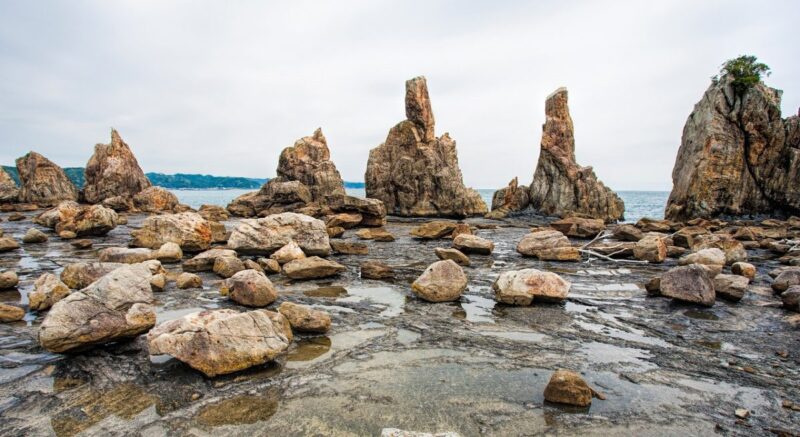
Located in Kushimoto, Hashigu-iwa Rocks is a rock formation of more than 40 pillar-like stones of various sizes stretching about 850 meters. The rock formation is registered as the National Scenic Sight, and it is a popular photo spot for the sunrise, as the sun rises through the gaps of the stones from May to November.
Hashigu-iwa Rocks
- Open for 24 hours
- Google MAP
Wakayama’s best local treats
In addition to its majestic and beautiful sightseeing spots, Wakayama is home to many mouthwatering local treats. The prefecture is blessed by the fresh seafood products of the Pacific Ocean, Wakayama is known for its world-class tuna cuisines and its distinctive whale cuisines. Apart from that, from Wakayama ramen to Arida orange, wherever you go, scrumptious local treats await in Wakayama. Here are our picks for the best foods to try when visiting Wakayama!
Subindex
1. Wakayama ramen
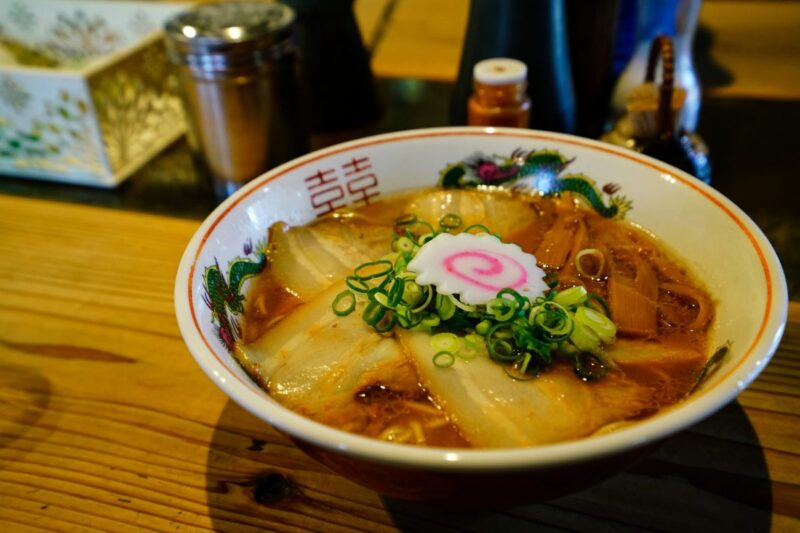
Japan has a wide variety of ramen noodles, and Wakayama Prefecture has its own unique take on ramen. Although it’s particularly known as Wakayama ramen, the locals call this ramen as Chuka soba, which literally means ‘Chinese noodles’. Wakayama ramen is a soy sauce-based ramen, topped with chashu pork, spring onion, menma, and kamaboko. Some ramen shops in Wakayama also add seafood as toppings for the ramen.
2. Umeboshi
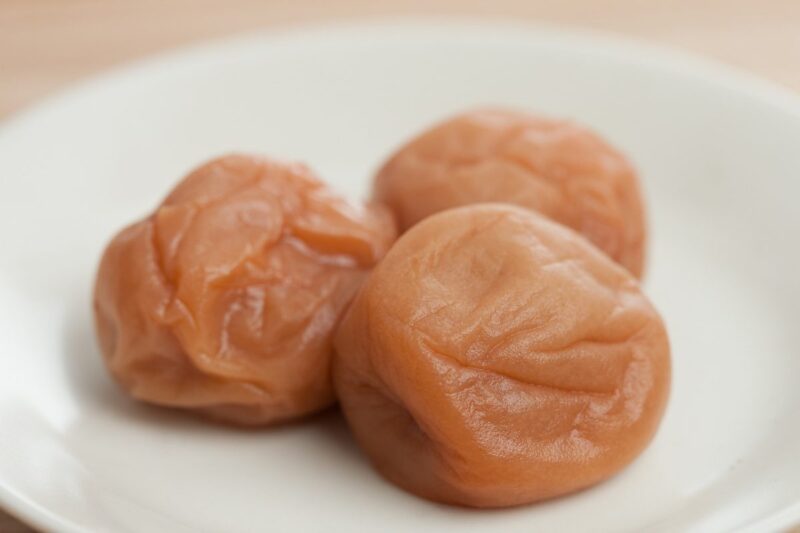
Wakayama produces more plums than any other prefecture in Japan, and it is best known for its umeboshi (pickled plums). The plums are pickled in vinegar, turning their flavor to sour and salty. Umeboshi are usually eaten together with rice, or used as a filling for the onigiri rice balls.
3. Whale cuisine
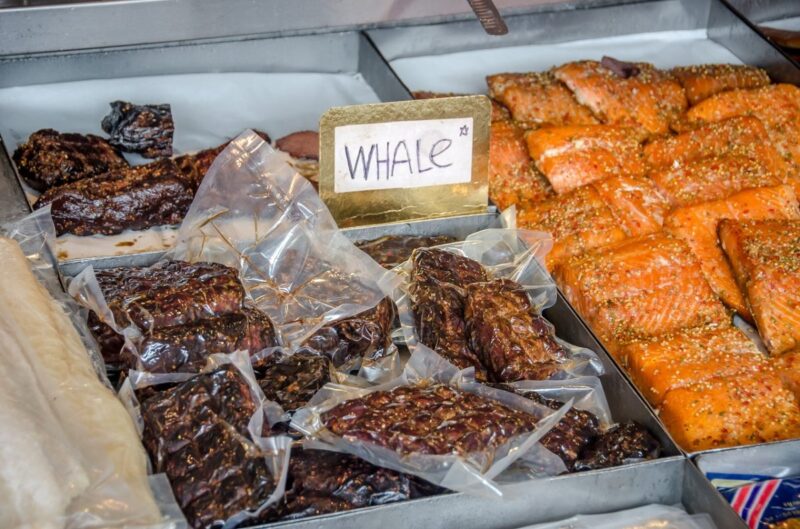
Wakayama is also known for its whale-eating culture, and you’ll see many stalls selling whale meat products at the market. From fried whale meat to whale bacon, you’ll find many different types of whale meat products in the prefecture. The whale meat apparently has similar textures with chicken, but similar tastes with tuna.
4. Arida orange
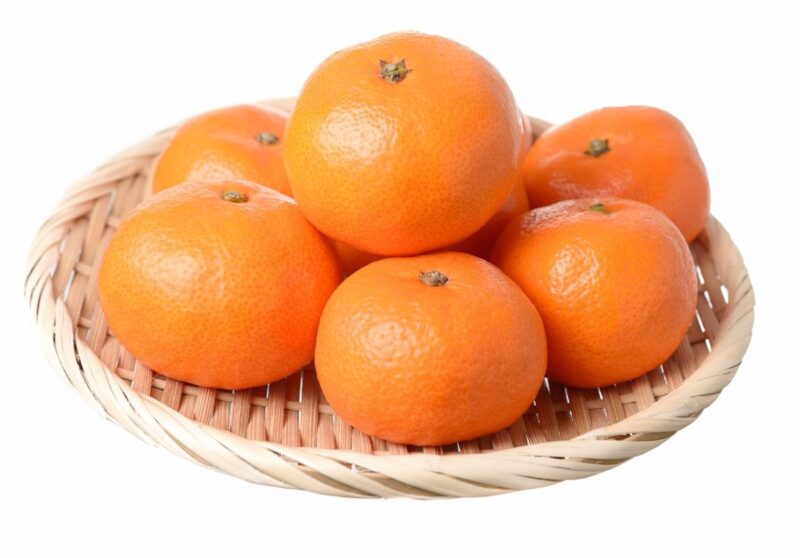
Arida orange is the finest Japanese oranges grown in wide fields of mountain slopes in the Kansai region. It is best known for its refreshing tartness. Sweet, rich, and juicy, Arida orange is considered as a top brand of Japanese oranges, and it is sold at a relatively high price.
5. Tuna cuisine
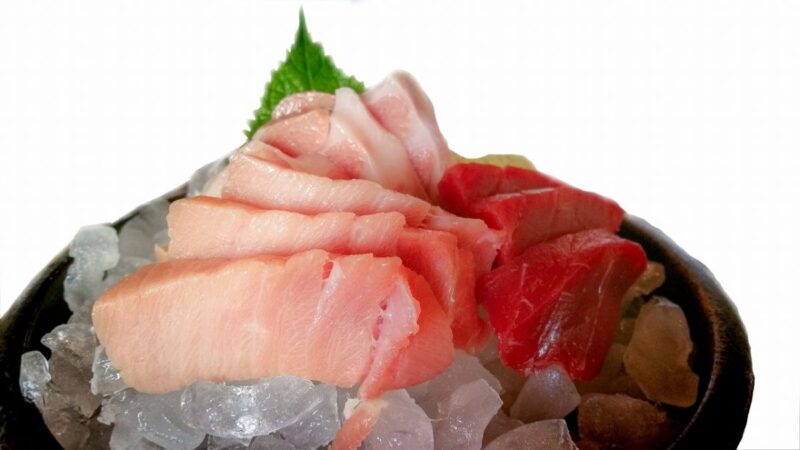
Surrounded by the Pacific Ocean, Wakayama is known for its world-class tuna cuisine. The prefecture prides itself on catching the highest amount of fresh tuna every year, and you’ll see many restaurants offering tuna cuisines in their menu. The best timing to eat the tuna is from January to March, and the fattiest usually are available in February. From sashimi to maguro-no-tataki (pan-seared tuna), how about visiting Wakayama to try its wonderful tuna cuisine?
Now that you have an idea of how many fabulous spots are in Wakayama, all you have to do is plan your itinerary to enjoy unforgettable experiences in Wakayama!
